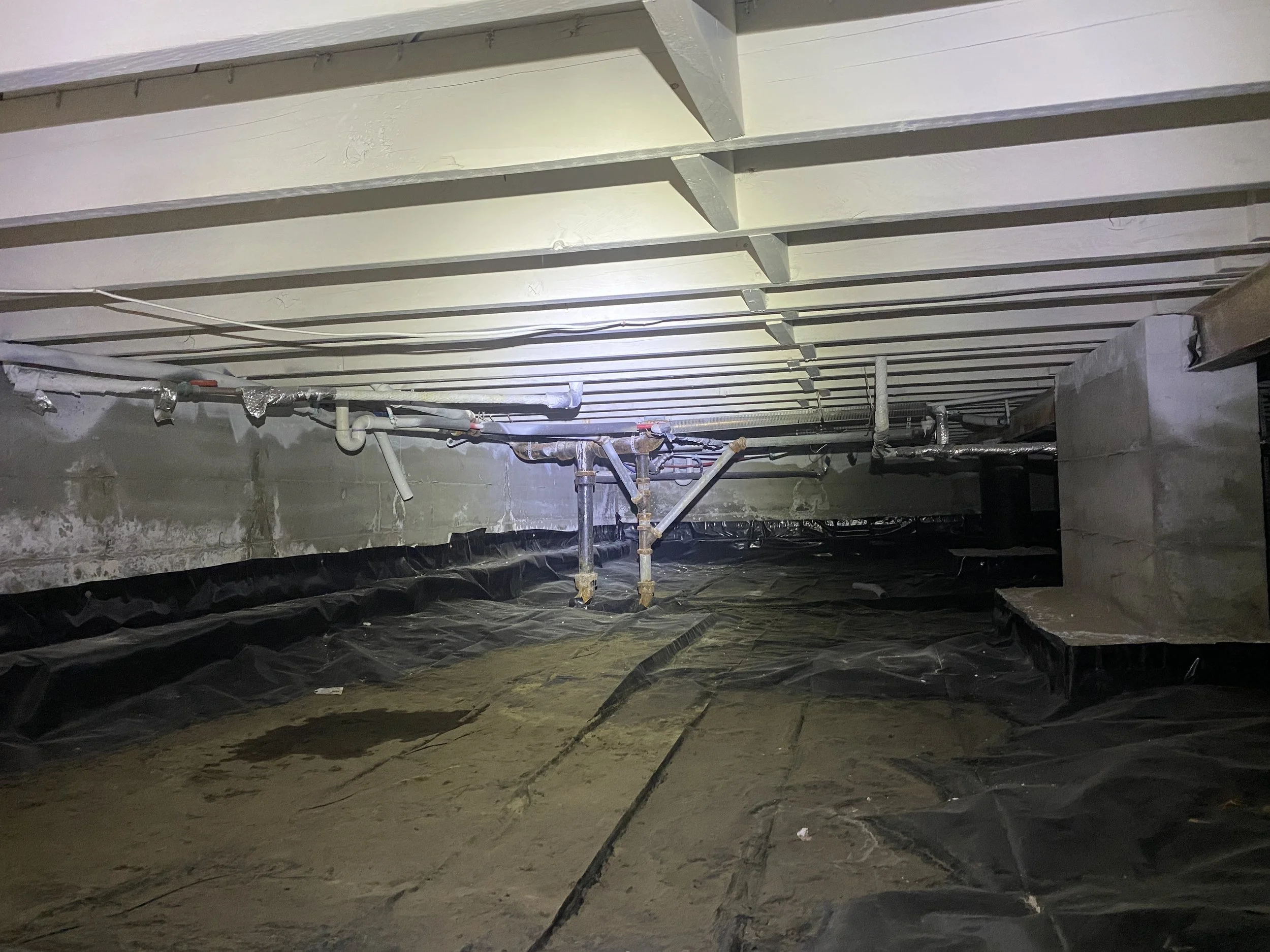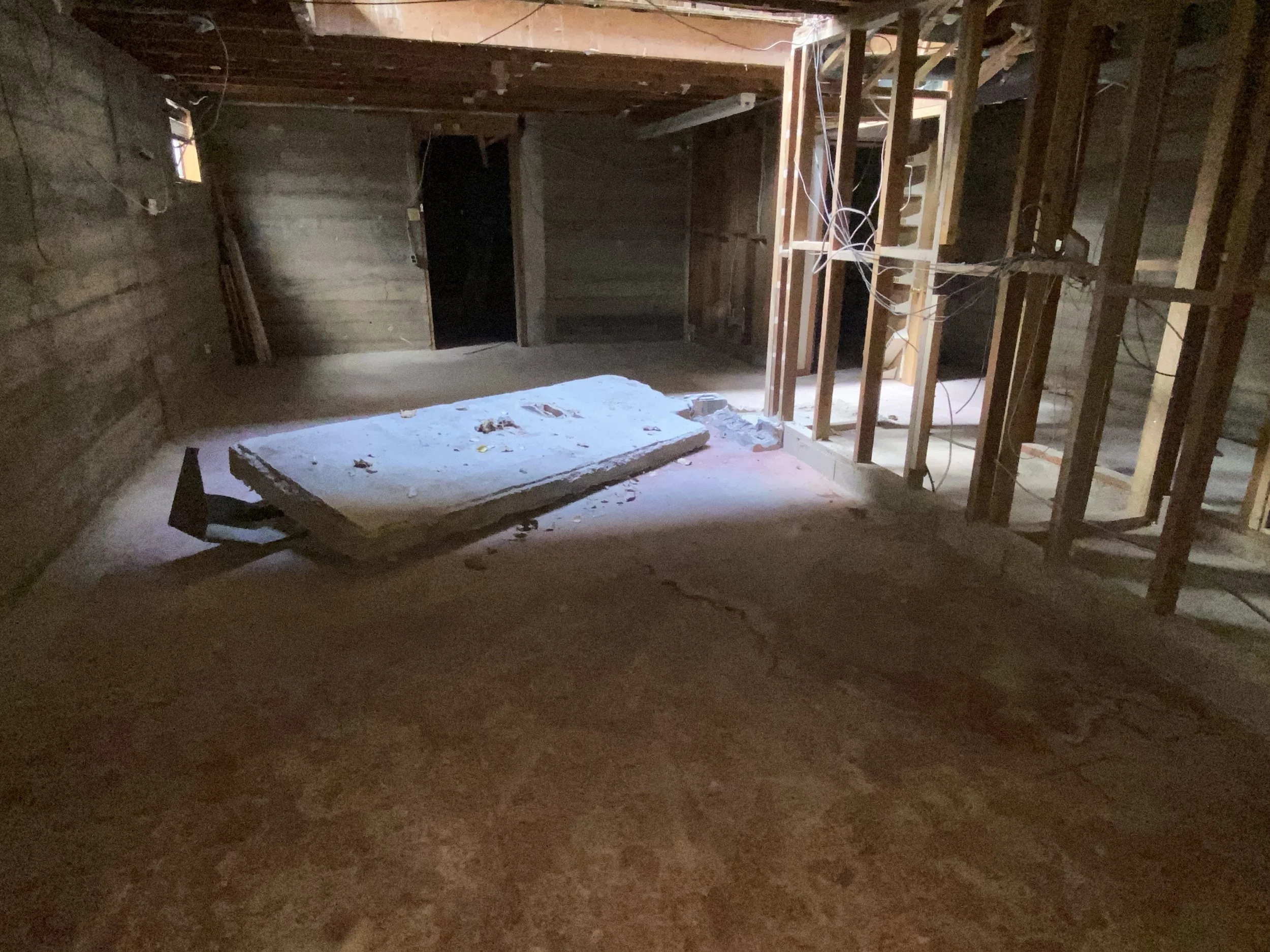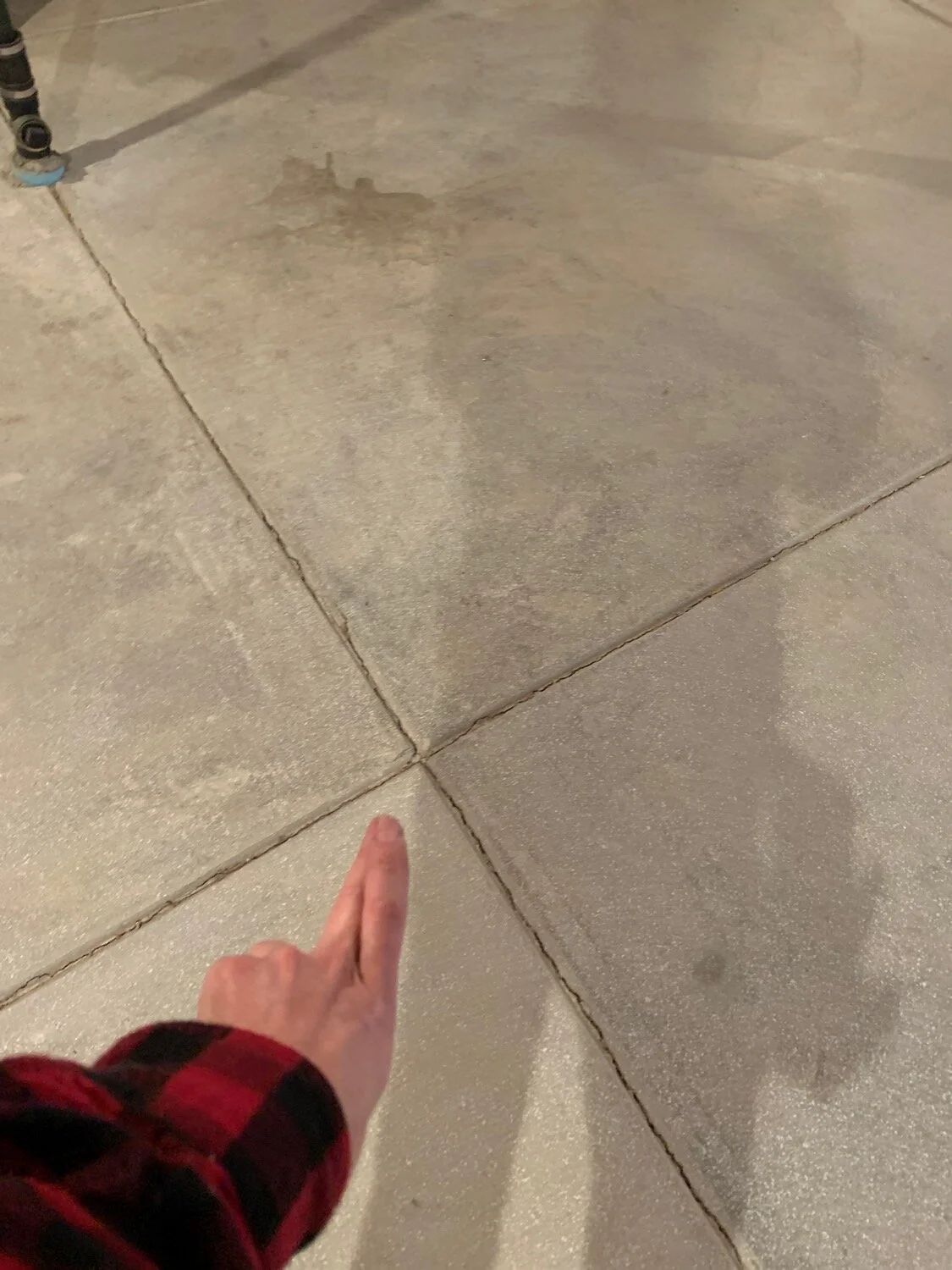Crawl space foundations, while common, require proactive maintenance to prevent moisture intrusion, structural movement, and energy loss. Understanding how expansive soils interact with crawl space foundations can help homeowners protect their investment and ensure a stable, comfortable living environment.
What's Crackin'? Foundations and Expansive Soils in Colorado, Part 2: Basement Foundations
Basements are an extremely common feature in Colorado homes due to the region’s expansive soils and the need for additional living space. While basements provide valuable square footage and extra protection against the elements, they also introduce unique structural challenges. In this installment of our series, we’ll explore common basement foundation types, potential defects, and how to determine when foundation issues require further evaluation.
Foundation Moisture Prevention
We have said it before, and we will say it again and again. Moisture management is critical when it comes to your home. We have seen firsthand how proactive steps can save homeowners from major headaches down the road, and conversely how improper moisture management has caused floods, structural issues and mold. Below are some tips to know and share.
Ensure Proper Grading Around the Home
The ground should slope away from the foundation at least 6 inches over the first 10 feet. This helps direct water away from the house.
At the very least, just make sure that water is draining AWAY from the home.
Maintain and Extend Downspouts
Downspouts should discharge water at least 4-6 feet away from the foundation.
Recommend installing downspout extensions to prevent water from collecting near the foundation.
Clean and Repair Gutters
Clogged or damaged gutters can cause water to overflow and seep into the foundation. Water spilling over from clogged gutters led to a lot of basement flooding last year during the heavy rainfalls that hit the Denver-Metro area.
Regularly clean gutters, especially in the fall.
Suggest ensuring all gutter joints are sealed and securely attached.
Install a French Drain or Drainage System
If the property has a history of water pooling near the foundation, recommend consulting a professional to install a French drain or other drainage solutions.
Check for Cracks in the Foundation
Small cracks can allow water to seep in. Inspect the foundation regularly and use an appropriate sealant to fill any minor cracks.
For larger cracks, suggest consulting a structural engineer or foundation specialist.
Maintain Proper Landscaping
Trees and shrubs should be planted at least 5-10 feet from the foundation to prevent root intrusion and soil moisture issues.
Opt for native plants that require less water, reducing the risk of over-saturating the soil.
Install a Sump Pump
In areas prone to heavy rainfall or high water tables, a sump pump can help remove excess water from around the foundation.
Recommend testing the sump pump regularly to ensure it's operational.
Waterproof the Basement or Crawl Space
Suggest using waterproof paint or sealants on basement walls to reduce moisture intrusion.
Install a vapor barrier in crawl spaces and ensure that it’s properly sealed.
Monitor Drainage After Heavy Rain
Walk around the property after a rainstorm to check how water is draining and identify any problem areas early.
Home Inspection Terminology: A Guide for Real Estate Agents!
At Alpine Building Performance, we’re excited to introduce our educational series (Part 1 and 2) designed to help real estate agents navigate the often complex terminology used in home inspections and residential construction. Whether you’re new to the industry or looking to deepen your expertise, this guide is here to clarify the essentials - and a few lesser-known terms. Let’s dive in!
Roofing Terminology
Starting at the top, here are some fundamental roofing terms to know:
Roof Deck/Roof Sheathing: The structural base of the roof, typically made from plywood or oriented strand board (OSB), where roofing materials are applied.
Underlayment: A moisture-resistant layer placed between the roof deck and shingles, made of felt or synthetic material.
Flashing: Metal or other materials used to direct water away from roof joints, such as chimneys and vents, preventing leaks.
Eaves: The overhanging edges of the roof that extend beyond the exterior walls.
Ridge: The peak of the roof where two slopes meet.
Soffit: The underside of the roof overhang, often ventilated to support attic airflow.
Fascia: The vertical board along the roofline, where gutters are typically mounted.
Exterior Terminology
The exterior of a home is a major focus in inspections. Here are key terms every agent should know:
EIFS (Exterior Insulation and Finish System): A multi-layered exterior cladding system offering insulation, waterproofing, and a decorative finish. Proper installation is crucial to avoid moisture issues.
Capillary Break: An air gap between materials to prevent moisture wicking into building components, such as between siding and the ground.
Brick/Stone Veneer: A facade that serves as siding rather than a structural wall. Unlike solid brick walls, veneers are primarily decorative.
Pressboard Siding: Engineered wood siding made from compressed wood fibers, resin, and wax. While affordable, it’s prone to moisture damage without proper maintenance.
Fiber Cement: A durable, moisture-resistant siding made from cement, sand, and cellulose fibers, often mimicking wood or stucco.
Balcony vs. Deck: A balcony is accessed only from the interior and lacks stairs to the ground, while a deck is open and typically has exterior stairs.
Flatwork: Refers to horizontal surfaces like concrete sidewalks, patios, or driveways.
Weep Holes: Small openings in masonry or window frames that allow trapped moisture to escape, preventing structural damage.
How to determine if a roof has impact resistant (Class 4) shingles
Can you tell if the roof has “impact resistant class 4 shingles”? Our homeowners insurance wants to know..
This is a question that we get almost daily as home inspectors and it’s a frustrating question because there is no way to visually determine if a shingle is impact resistant/class 4 rated. The only way to determine a shingles impact rating is by the manufacturer's spec sheet. Some shingles do have labeling on the back side of the shingle, but of course we can’t see that without ripping up a shingle.
Tip: If a roof is newer or if you have the contractor's information who installed the shingles, then we recommend contacting the contractor to see if product specifications are still available for that job. Sometimes there are extra shingles lying around the property, but that is rare and not reliable. Most often the answer is just not available and certainly something that the inspector cannot determine through the normal scope of an inspection.
Other non asphalt shingle roofing materials such as concrete tile or metal roofs are inherently impact resistant and don’t need a rating to determine impact resistance.
Next time you are advising your clients on a homeowners insurance application or looking for this info yourself, keep this information in mind and see if you can track down documentation from when the roof was installed.
How Much Does A Standard Garage Door Tuneup Cost And What Does It Include?
A garage door and opener servicing generally costs between $120-$150, but many companies will run door service specials periodically for less than $100.
Routine garage door and opener service typically includes a comprehensive inspection of panels, hinges, bearing, cables, drums, track and opener for any irregularities. This also typically includes re-tensioning the springs for proper balance as well as making any adjustments to the door to make things run as smoothly as possible. A garage door technician should also check the opener limits and sensitivity to ensure safe operation.
How often should a garage door be maintained and why is routine maintenance important?
Garage door professional, Louis Wilson, of Ascent Garage Doors recommends that garage doors should be serviced annually or at least every other year in order to maintain proper spring balance and make sure there isn’t any progressive failure of components that could cause larger problems.
Many people don’t realize it, but a garage door is the largest moving part of a home and can present safety issues if not properly serviced. Regular service greatly reduces the risk of large problems with your door coming off track, getting stuck, or even panels falling, which is a huge safety hazard.
Seller Tips for Prepping Your Home for an Inspection
HomeBinder - Utilizing Technology to Help our Clients Beyond the Home Inspection
What to Expect with Your Home Inspection - Our Top 10 Most Commonly Asked Questions, Answered
What's Crackin'? Foundations and Expansive Soils in Colorado, Part 1: Slab-on-Grade
One of the most common observations we come across inspecting homes in Colorado are cracked foundations, most commonly made of poured concrete, concrete masonry units or brick. This issue is also a higher priority item a potential buyer may consider when deciding to go forward with or walk away from the purchase of a home.
What is Radon Gas and Why you Should Test your Home for Radon?
R-22 Refrigerant Phase Out
A common issue that we as home inspectors are running into currently is the phase out of R-22 refrigerant also known as HCFC-22. If your system was installed before 2010, there is a high probability that it contains R-22 refrigerant which will be impacted by the change that is occurring January 1, 2020.
What to Expect from a Home Inspection - Setting Expectations Prior to Your Home Inspection
One question that we receive on a daily basis is “what does your home inspection include?”. What does a standard home inspection cover? That’s a great question, and an extremely reasonable one for anyone about to hire a home inspector. Well, the answer differs depending on whom you ask, but it shouldn’t differ greatly if you are asking a reputable home inspector or home inspection firm.










